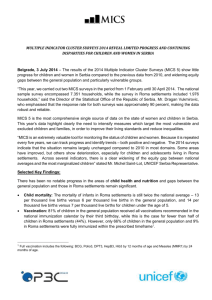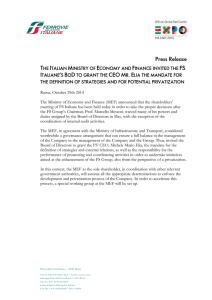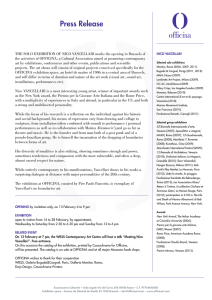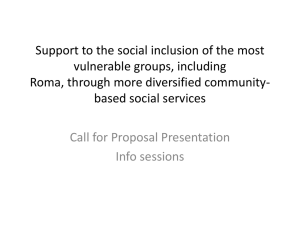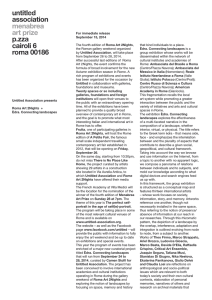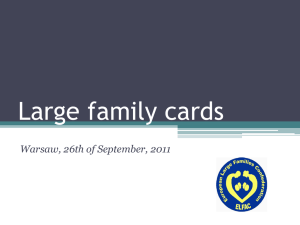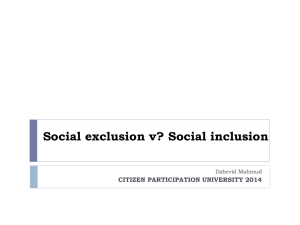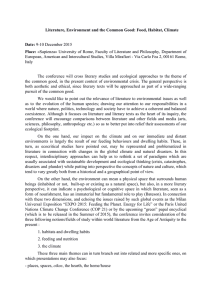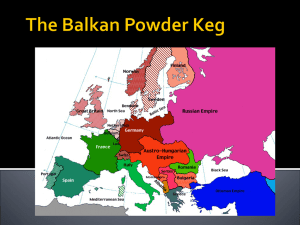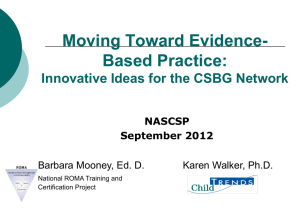MICS 4 - Unicef
advertisement
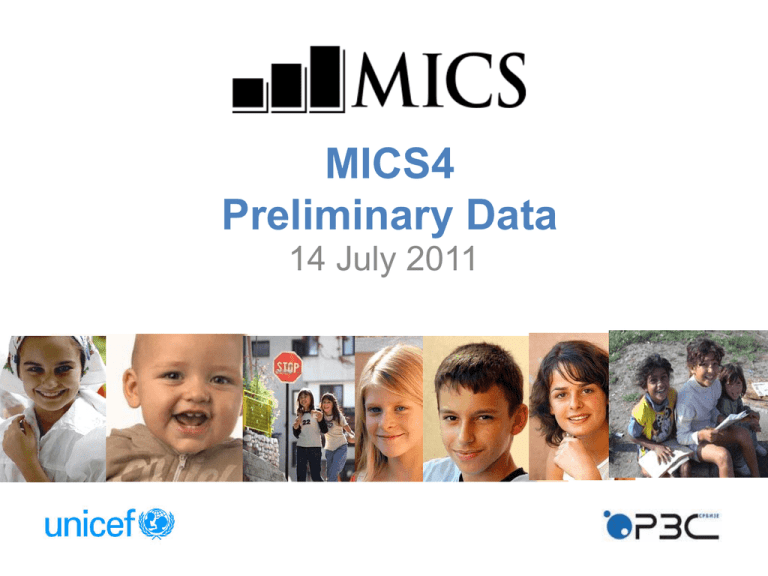
MICS4 Preliminary Data 14 July 2011 MICS4 Implementing Team • Statistical Office of the Republic of Serbia (SORS) • UNICEF Technical Committee • SORS • UNICEF • Social Inclusion and Poverty Reduction Unit of the Office of Deputy Prime Minister for European Integration What is MICS4? • Multiple Indicators Cluster Survey – MICS • MICS is a global survey conducted for the fourth time in the Republic of Serbia households • MICS4 provides data on the situation of children and women, and key indicators to monitor national progress against the Millennium Development Goals and other national and international strategies Types of Questionnaires MICS4 includes four questionnaires: • Household questionnaire (7 modules) • Questionnaire for children under 5 years of age (7) • Questionnaire for women 15-49 years of age (14) • Questionnaire for men 15-29 years of age (9) Sample Size Total – 8600 households National sample • 6800 households in 400 enumeration areas • Response rate 94% Sample of Roma settlements • 1800 households in 100 enumeration areas • Response rate 96% Timetable • Initial training and testing of questionnaires and methodology: September 2010 • Main training and pilot survey – Divčibare: October 2010 (over 120 participants) • MICS 4 communication campaign: October 2010 • Field work: from November 1st to December 30th 2010 • Parallel data entry, data check up and processing • Preparation of preliminary and final reports MICS4 team members Team Supervisor Editor 2 Interviewers Measurer Increased Preschool Education Coverage (36 - 59 months) 44 33 8 4 Serbia Roma settlements 2005 2010 Preschool Education (36 – 59 months) 0 10 20 30 40 50 60 70 80 59 Belgrade 53 Vojvodina 34 Sumadija and Western Serbia 30 Southern and Eastern Serbia 57 Urban 29 Rural Percent Primary 21 40 Secondary 66 Higher/High Poorest Second Middle Fourth Richest 22 27 44 50 78 90 100 EARLY CHILDHOOD DEVELOPMENT Republic of Serbia The Poorest (Quintile) Roma in Roma settlements Support for learning (3-4 years) 95 84 67 Father’s support for learning (3-4 years) 78 62 63 Learning materials: children’s books 76 49 23 Increasing number of Roma children attending primary school 91 66 2005 2010 EDUCATION Republic of Serbia The Poorest (Quintile) Roma in Roma settlements School readiness (percent) 97 95 78 Net intake rate in primary education (percent) 95 84 91 Primary school net attendance ratio (percent) 99 96 88 Children reaching last grade of primary 99 93 86 1.01 1.02 0.96 Gender parity index (primary school) Preschool Programme and School Attendance 100 90 80 70 60 50 40 30 20 10 0 5 6 7 8 9 10 Male 11 12 Female 13 14 15 16 Male - Roma 17 18 19 20 Female - Roma 21 22 23 24 Early Marriage 50 14 5 1 before age 15 before age 18 Serbia before age 15 before age 18 Roma Settlements High Coverage of Prenatal and Postnatal Health Care 100 99 99 95 Serbia Female Roma in Roma Settlements At least one examination by a health care professional Delivary in health care institutions REPRODUCTIVE HEALTH Republic of Serbia The Poorest (Quintile) Roma in Roma settlements 3 9 31 Contraceptive prevalence rate (percent) 61 58 64 Modern methods of contraceptive 22 10 6 Coverage of women's health care appropriate content prior to delivery (percent) 98 93 88 9 2 1 Percentage of women aged 20-24 years who gave birth before the 18 Percentage of women who have attended the preparation for pregnancy and parenting Visits of Visiting Nurses 88 82 80 Serbia Poorest Roma Settlements 29 28 19 During the pregnancy The first week after delivery Decreased Child Mortality Rate in Roma Settlements 28 25 2005 2010 15 14 Infant mortality rate Under-5 mortality rate Child Mortality Rate, 2010 15 14 8 7 Infant mortality rate Serbia Roma in Roma settlements Under-5 mortality rate CHILD HEALTH Republic of Serbia The Poorest (Quintile) Roma in Roma settlements 7 9 24 Exclusive breastfeeding under 6 months 14 11 9 Predominant breastfeeding under 6 months 39 39 52 Milk feeding frequency for non-breastfed children 89 90 60 The prevalence of stunting (percent) Decreasing number of women who approve their husband’s violence 36 2005 20 6 3 Serbia Female Roma in Roma settlements 2010 Psychological or Physical Punishment of Children 2-14 years of Age 87 86 85 70 67 64 Total Female Serbia Roma Settlements Male HIV/AIDS Republic of Serbia The Poorest (Quintile) Roma in Roma settlements Condom use with non-regular partners 77 (60) 37 Women who know where to be tested for HIV 74 46 29 HIV testing during antenatal care 14 7 2 Increasing Knowledge on HIV Prevention 48 42 12 7 Serbia Female Roma in Roma Settlements 2005 2010 CONCLUSION • Progress is visible in all the observed areas, both on the national level and among Roma living in Roma settlements • Disparities among the observed groups still exist, but the differences are on decrease Thank you!
